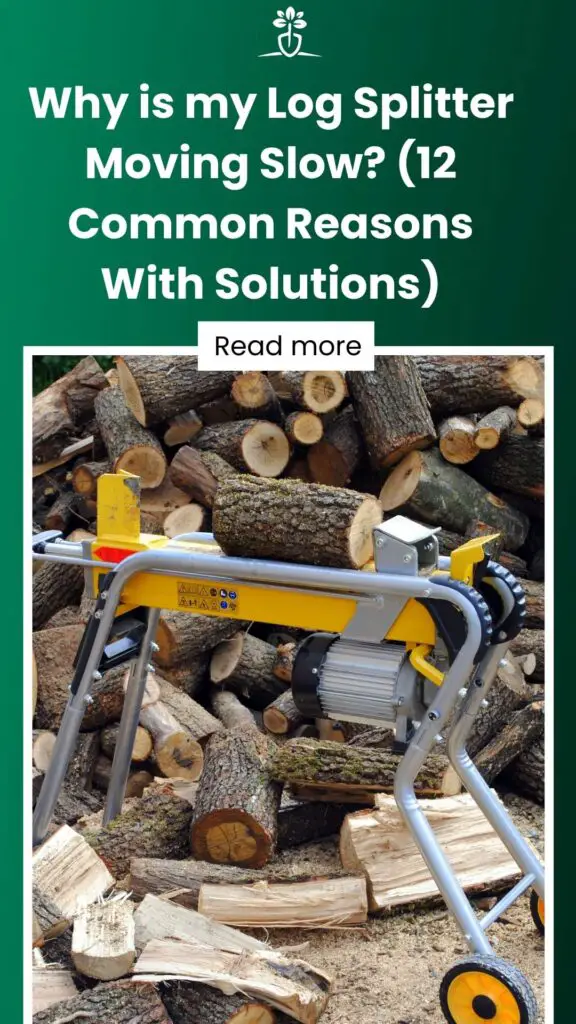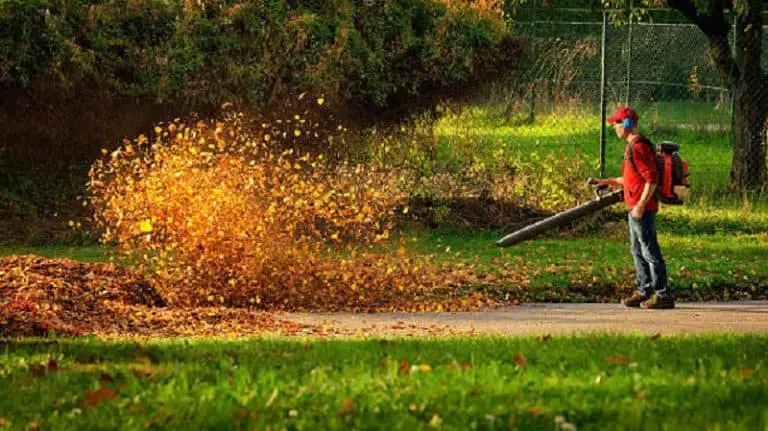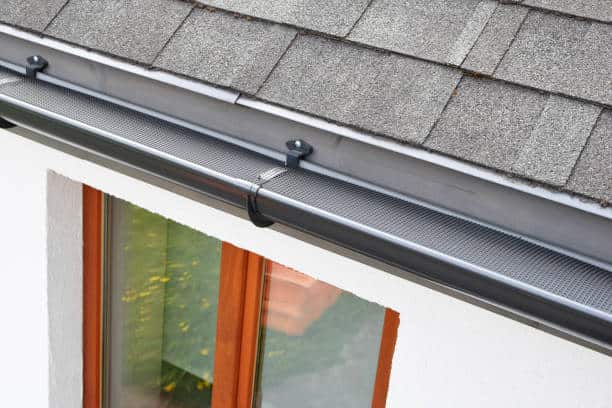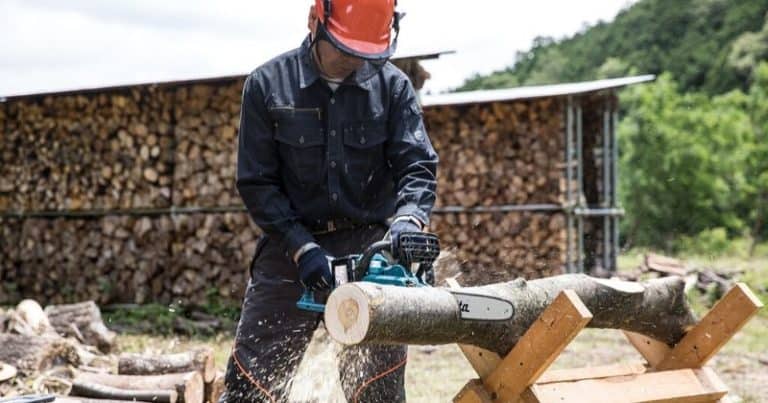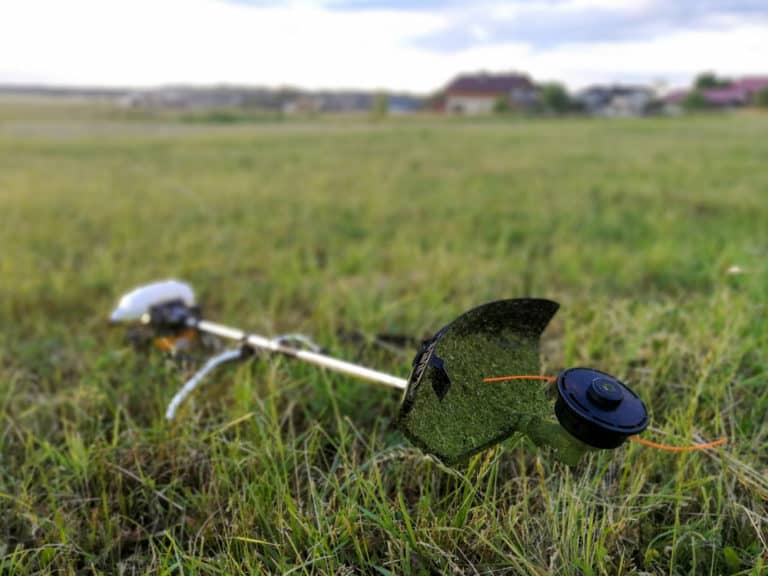Why is my Log Splitter Moving Slow? (12 Common Reasons With Solutions)
Are you uncertain about why your log splitter is operating at a sluggish speed?
This article discusses twelve common reasons why your log splitter isn’t working at the optimal speed and how to fix them.
A log splitter usually runs slowly because of problems with hydraulics, power supply, a dull wedge, air in the lines, a blocked fan, or a failed pump. Checking each potential common cause can help you identify the problem and rectify it with simple troubleshooting steps.
Contents
12 Common Causes for a Slow Log Splitter and their Solutions
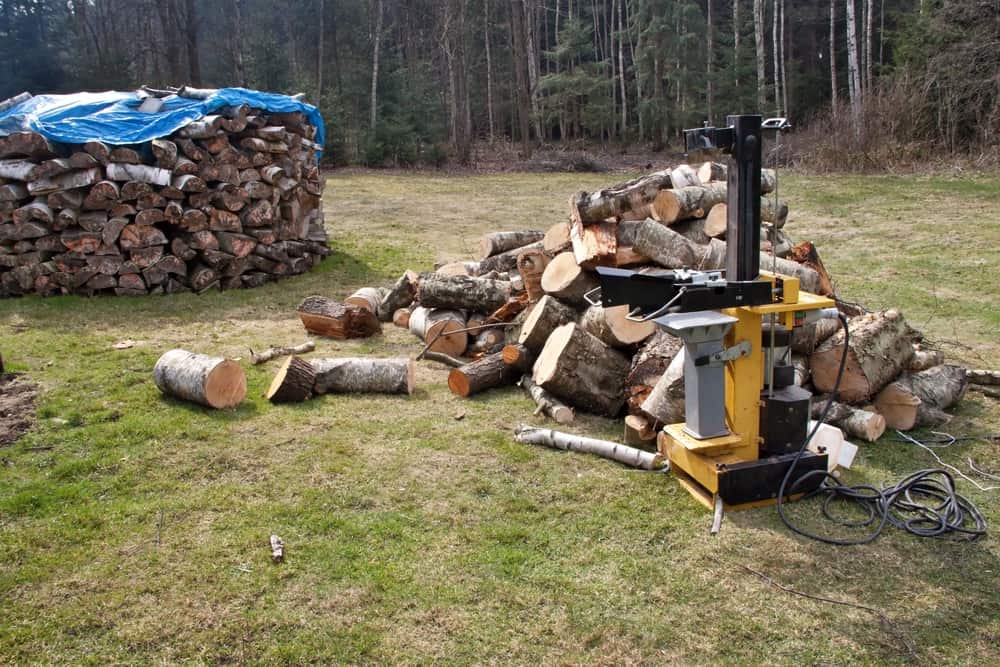
A log splitter cycle is the time it takes for a splitter to chop a wooden log. The cycle varies from 3 – 5 seconds to 30 seconds and depends on the type of log splitter you have.
There are different kinds of log splitters available in the market, including gas splitters, electric splitters, and manual splitters. Each comes with its own set of common issues that might affect ideal performance.
Here we discuss every potential common cause for different log splitter types.
1. Power Supply Issues
This one might seem very basic, but you’ll be surprised at how often the reason for a slow log splitter is the power supply. This of course depends on the size of log splitter you need.
For an electric log splitter, make sure that all the cables and fuses are working properly. If not, replace them with new ones. If the fuse and cables work fine, there could be a kink in the cable or a wounded extension cable. Unwind the cable and check if the performance of the log splitter has improved.
For a gas splitter, Make sure that you have not overfilled or underfilled the oil and gas. Usually, rectifying these simple issues can have your log splitter back to working properly in no time.
Also, remember to empty your log splitter of any fluids if you plan on storing them for extended periods. Usually, leaving fluids in an unused splitter for a long time can damage the inner components, causing the cycle time to increase.
Also, make sure the spark plug is working correctly.
2. Low Oil
When your log splitter is running low on oil, it will hinder its performance. You can check the oil with a dipstick or perform a simple test – raise the front end of the log splitter using a wooden block.
Once raised, run the splitter as normal. If your log splitter speed increases, it is a definite indication that your machine is running low on oil.
In such a case, make sure you have adequate oil levels, and your splitter should work as well as new.
3. Blockage in the Fan
Another reason for a slowed-down log splitter is a jammed motor due to blockage in the fan.
You can check for this issue easily. Remove the fan cover and try to turn it to see if it moves without difficulty. If not, then look for blockages in the fan and remove them. Clean the fan blades of dirt and debris to allow smooth movement.
4. The Handle is Loose
This may not sound like a serious issue, but that’s exactly why many people fail to rectify it.
A loose handle can prevent the lever from moving down all the way, which in turn stops the log splitter from working at full speed.
Ensure that the lever’s plastic knob is screwed on properly. An unscrewed knob causes hindrance in the lever being pushed.
5. The Log Splitter is Pointing Downhill
Another reason, with a quick fix, that usually gets neglected by most people with slow log splitters is the direction in which the machine is pointing.
For even power distribution, it is crucial that the splitter be leveled or pointing uphill. Otherwise, the splitter would fail to operate correctly since pointing downhill puts unnecessary stress on the machine. In other words, the splitter struggles to move fluids through the machine for optimal operation.
Before using the splitting wooden logs, make sure the machine is pointing uphill or on leveled ground, but never downhill.
6. Trapped Air in the Hydraulic System
One more common cause of why your log splitter slows down over time is trapped air inside the hydraulic system. When you split logs, the pressure increases, which causes the air to compress.
Compressed air inside the system does not allow full force to be transmitted by the fluid in the system. Thus, “bleeding” the trapped air is crucial for the log splitter to work at full speed.
To purge the trapped air, remove the oil-filling plug by extending the piston rod as much as you can. Quickly move the release screw anti-clockwise until you see oil spilling from the oil-filling plug. To stop the piston rod from moving, rotate the screw in the opposite direction immediately.
Put the oil-filling plug back on and tighten it to stop air from entering the system again.
Here is a great video explaining how you can bleed air from a log splitter.
7. Potential Blockages in the Ram
Check if anything is blocking the moving ram carriage. Even the most minute obstruction will cause the ram to jerk upon return or restrict it to go back to its original position.
Check for any splinters stuck under the blade or the pusher. If the plastic spacers have dislodged, then you should slot them in again.
Make a last check for any sap build-up on the log bed. In case you find any, grease it for smooth operation.
If the ram is bent, it would be prudent to call a maintenance specialist to fix the issue.
8. Wedge is Not Sharp Enough
Over time, especially with heavy use, the splitter wedge loses its sharpness. A dull wedge would not split wood as fast as you like.
To sharpen the wedge blade, you can file it using a coarse metal and then hone the sides using a rough-surfaced file. For finishing touches, sharpen the edges with the file.
You can remove the edge easily to sharpen it. A sharpened wedge will hack through wood logs much faster.
9. Damaged Hydraulic Pump
A pump is a crucial part of a hydraulic system that pushes the fluid inside to create the pressure force which splits the wooden log. Splitters with a two-stage system use the pump to push the arm to split wood and then go back to their original position to load in more logs for chopping.
When pump seals wear over time, they can cause the fluid to leak out of the system, which causes the splitter to slow down. In that case, you should disassemble the pump and replace it with new seals. Also, ensure there is no metal debris in the hydraulic system. Flushing out the hydraulic fluid and replacing the filter should do the job.
10. Insufficient Fluid in the Pump or Lines
To regularly maintain your log splitter, top up your machine with hydraulic fluid to create the needed force when splitting wood.
If the pump or lines lack sufficient fluid, the log splitter will not work up to speed to move the arm with the power required to hack through different types of wood.
Refer to the machine’s user manual to ensure regular fluid checks and refills whenever recommended.
11. Leaking Fluid from the Hydraulic Valve
Another plausible reason why your log splitter may work slower than its cycle is a damaged hydraulic valve.
The valve directs the hydraulic fluid to the cylinder, which creates a pressurized force to move the arm forward and then retract it for reloading. There are many seals in the valve that can get damaged with time and usage.
When that happens, it inhibits user control of the hydraulic system, and ultimately the log splitter. In extreme cases, it can stop the splitter from working at all.
To rectify this problem, you have to replace the valve to prevent any leakage from the system.
12. Clogged Hydraulic Filter
Any solid materials, dirt, or debris in the hydraulic fluid can clog different components that make up the hydraulic system.
The function of a hydraulic filter is to make sure that no such restrictions enter the fluid. If so, they can damage the cylinders in the long run.
Therefore, the filters need cleaning and replacement periodically for unrestricted fluid flow in the system. Clogged filters affect the power employed by the arm for efficient log splitting.
Contaminated hydraulic fluid running through the system results in significant damage to the log splitter over time.
Conclusion
A log splitter is an efficient tool that can slow down over time due to wear and tear or extensive use. Start by making simple checks like the power supply, oil levels, and placement of the splitter. If everything seems okay, then move onto the hydraulic system and rectify any problems you might find.
Regular maintenance and replacement of worn-out parts should allow your log splitter optimal performance for a long time.
